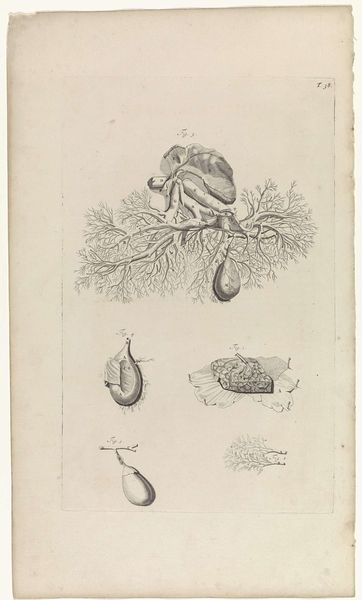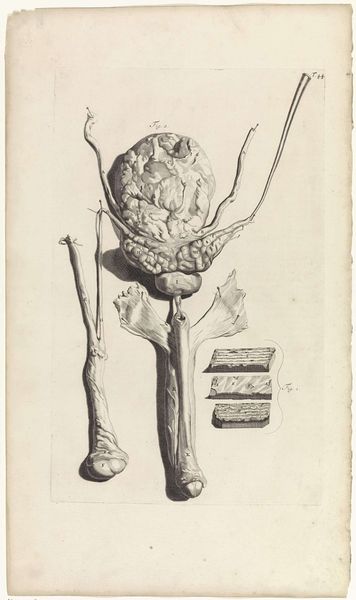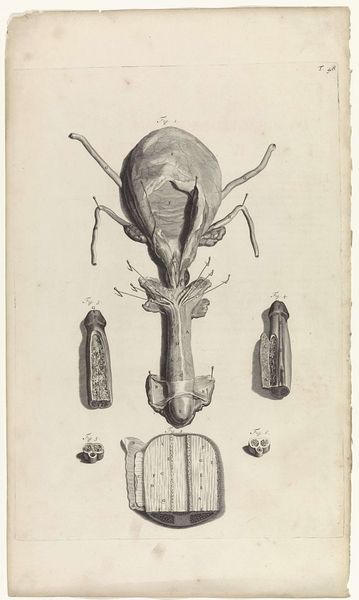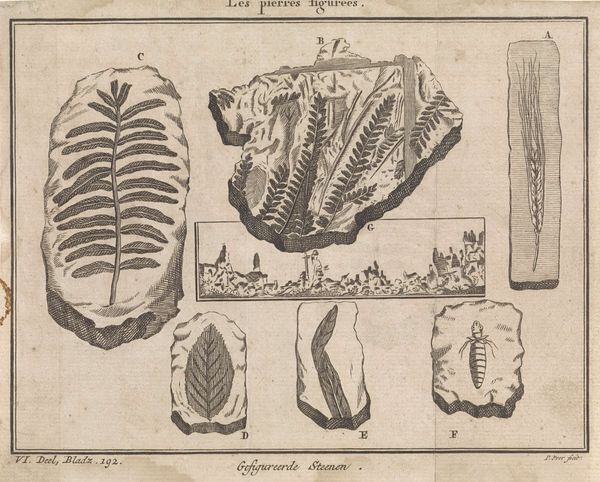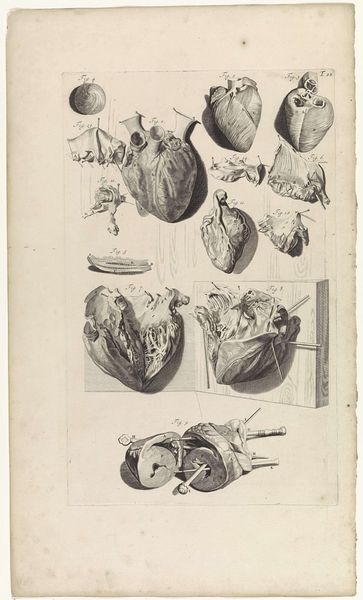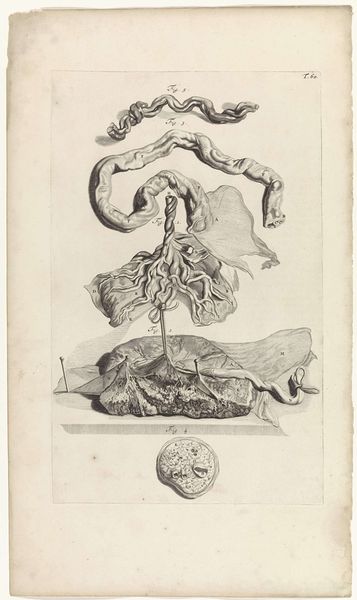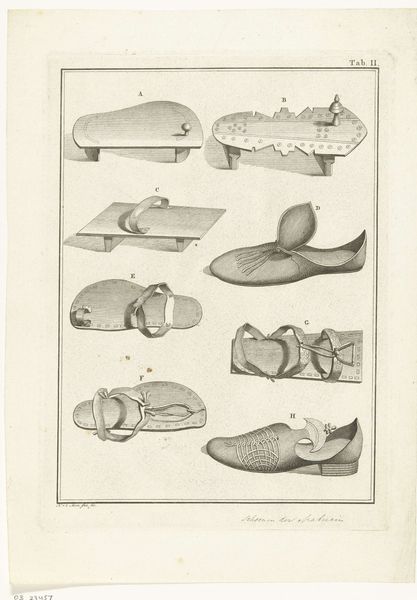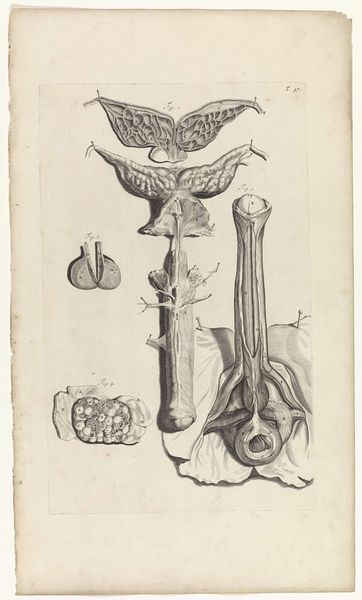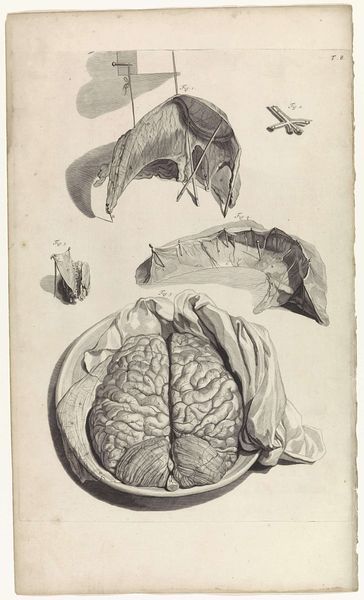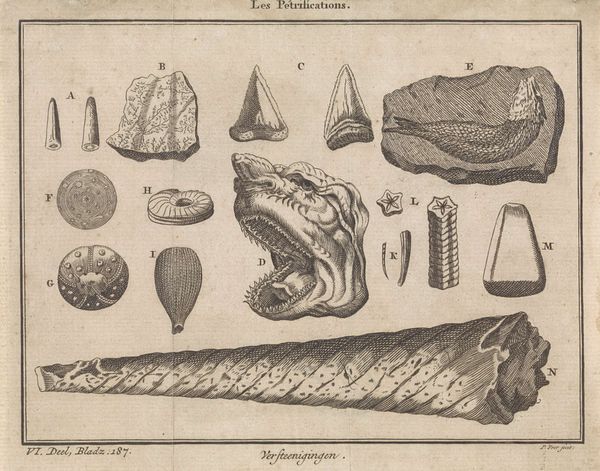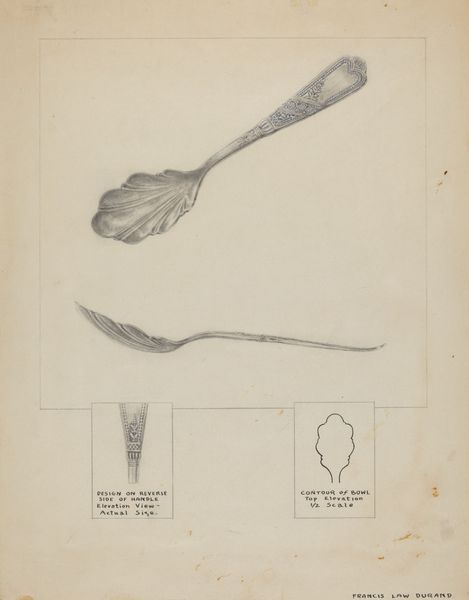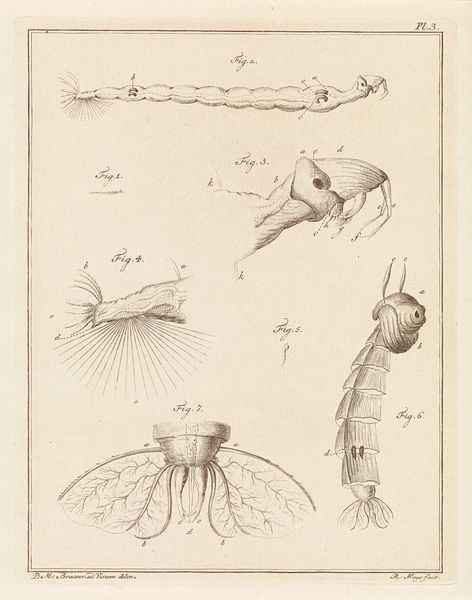
drawing, paper, ink
#
drawing
#
baroque
#
pen sketch
#
pencil sketch
#
figuration
#
paper
#
ink
#
ink drawing experimentation
#
pen-ink sketch
#
genre-painting
#
academic-art
Dimensions: width 275 mm, height 441 mm
Copyright: Rijks Museum: Open Domain
Curator: At the Rijksmuseum, we have "Anatomische studie van delen van de placenta," an ink drawing by Pieter van Gunst dating back to 1685. Editor: It’s rather clinical at first glance, all very precisely rendered, yet there’s something hauntingly delicate about the exposed veins and textures. Curator: It belongs to a wider trend of anatomical studies, of course. Before the age of photography, accurate drawings were critical for medical education and knowledge dissemination. Editor: Absolutely. What's interesting is how even in this pursuit of scientific accuracy, symbols emerge. The way the main form is draped recalls classical motifs – Venus perhaps, but life-giving, rather than born of the sea. What does this juxtaposition mean for societal attitudes toward birth and science at this time? Curator: A crucial question! It speaks volumes about the uneasy relationship between scientific advancement and established cultural or religious norms of the time. Public dissections, for example, were very theatrical, laden with societal and political implications, they were for male experts. Do you think this drawing might speak of a kind of desire to control knowledge in the sphere of male elites? Editor: A thought-provoking idea. It certainly gives a sense of formalized investigation, of seeking answers through close looking and cataloging, in terms accessible only to scholars. The meticulous detail, almost obsessive, gives that impression of learned control and documentation. Yet there is that haunting aesthetic sense that seeps through, what a strange tension! Curator: Yes, a beautiful push-pull that’s quite characteristic of this period when the world of science was challenging religious dogmas while very much entwined in the scientific academic social sphere, a world dominated by male discourse. Editor: These drawings are much more than simple illustrations; they show our evolving and continued interest in life. Curator: I think, seeing art through social history reveals much wider perspectives on how a society sees itself and develops understanding.
Comments
No comments
Be the first to comment and join the conversation on the ultimate creative platform.
